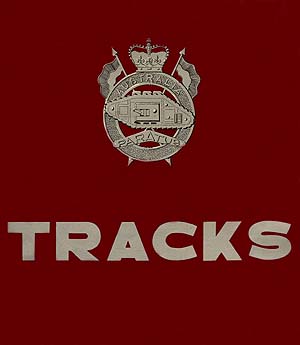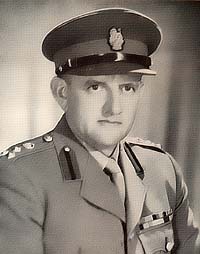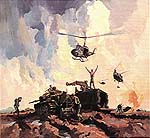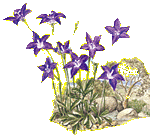Tracks Magazine - August 1955


A couple of decades ago I was travelling through northern NSW and called in to see Archie McDonald, an old 1 Armoured Regiment LAD mate. Archie had kept his copy of the first issue of the Regiment's glossy magazine, Tracks — August 1955. It is this magazine that is re-produced below
Tracks Magazine
Index
Preface Principles of Employment of Armour Tracks To Tradition Keep An Open Mind Review of Squadron Activities Regimental Headquarters Headquarters Squadron Reconnaissance Troop A Squadron Notes B Squadron Notes Nucleus Squadron Regimental Training Troop Light Aid Detachment, RAEME Signals Troop, RASigsIndex (cont)
Review of Allied Armour Tanks in The Jungle Korean Sidelights Equipments 1954 .. A Royal Occasion On Parade Elevating Gear Officers' Mess Notes Sergeants' Mess Notes In The Realm of Sport It Could be You The Adjutant's Dilemma While Others Sleep [et al] Beauchamps Own Epilogue Free Verse From A Free Thinker
foreword by

The Royal Armoured Corps owes much to the leadership of Brigadier I. T. Murdoch, C.B.E., P.s.c., Commanding Officer of an Armoured Regiment at the close of World War II, later a Brigade Commander in Korea, he is now Brigadier, Staff Duties, Malaya, and was created a Commander British Empire (Military Division) in the recent Queen's Birthday Honours List.
The First Armoured Regiment is honoured in having the initial issue of its Journal contain a foreword by such a distinguished soldier and outstanding Australian.
I am honoured by the invitation from your Commanding Officer to contribute a foreword to the first edition of your Regimental Magazine. Having served for many years in the Armoured Corps I am naturally pleased at the opportunity to address all members of the Regiment in this way.
Shortly after the war approved plans for the post-war army included, as far as the R.A.A.C. was concerned, the expansion of the Armoured School, the training of Cadre Staffs, and the subsequent raising and training of the Citizen Military Force Units. This, despite the small numbers to which the Armoured Corps had shrunk at that time, and the almost total lack of instructors trained in modern techniques was creditably accomplished.
Armoured representationn in the regular field force was to be initially one Armoured Regiment: it being planned that the Regiment would be raised on the withdrawal of the 1st Armoured Car Squadron from occupational duties in Japan and using that unit as a nucleus. 1st Armoured Car Squadron arrived back in Australia in 1949 when its name was changed to 1st Armoured Regiment and steps for its conversion to tanks and its increase in strength initiated.
Such was the situation within the Corps at the time. Whilst satisfactory results had been achieved it cannot be denied that the necessity for a regular unit in Australia had been very keenly felt during the implementation of plans for the post-war army and later inn the maintenance or improvement of standards. With the gradual increase in strength of the Regiment, difficulties which formerly existed, have now been largely removed.
The Regiment, in addition to preparing as a unit of the field force for possible operational tasks, has training responsibilities in regard to the corps as a whole. Included in the latter are the functions of a training unit in that the Regiment is required to train all R.A.A.C. recruits; the selection and training of N.C.O.'s and specialists for corps appointments outside the Regiment,and also the staging of demonstrations from time to time. It is clear then that the general efficiency of the R.A.A.C. depends in, no small measure on the success achieved by the Regiment in the many tasks allotted to it. Each of the roles mentioned gives rise to separate problems, but when all are combined in the one unit, present difficulties not normally encountered, call for careful organisation and thorough and continuous supervision.
A rapid build-up in numbers was not possible. However the Regiment had, from the outset, the advantage of the services of a number of instructors trained in. the U.K. and shortly afterwards modern equipment purchased from the U.K. This, and the steady increase in strength which has taken place over a period, has enabled the Regiment to make good progress in the attainment of efficiency in its role as a field force unit. Other duties entrusted to the Regiment are being successfully handled with the result that the Regiment has played a vital part in build-up of the R.A.A.C. and will be an ever-increasing factor in the further development of the Corps. The contribution made to the professional knowledge of members of the corps has already been great: its future contribution will undoubtedly be greater.
I wish the Regiment continued success in its military responsibilities and activities, and in any future ventures to which it may be committed.


